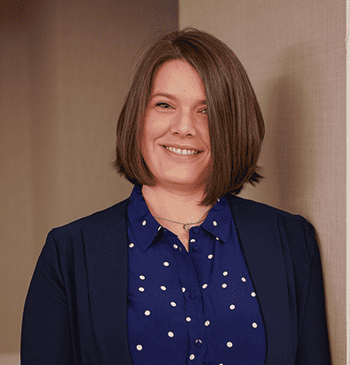Laura Alix is the Director of Research at Bank Director, where she collaborates on in-depth strategic research for bank directors and senior executives, including Bank Director’s annual surveys. She also writes for BankDirector.com and edits online video content. Laura is particularly interested in workforce recruitment and retention strategies, and environmental, social and governance issues facing the banking industry. Previously, she covered national and regional banks for American Banker, and before that, she covered community banks for Banker & Tradesman and The Commercial Record. Based in Boston, she has a bachelor’s degree from the University of Connecticut and a master’s degree from CUNY Brooklyn College. You can follow her on Twitter or connect on LinkedIn.

Will Community Banks Know When Their Credit Quality Cracks?
Recent accounting changes will impact how banks report loan modifications — and how boards monitor them. That could prove vital if credit quality deteriorates.
Community banks are facing their first test of credit migration now that standards for calculating loan loss allowances have been fully implemented by banks.
Under the current expected credit loss model, or CECL, banks now must account for the lifetime losses on a loan at the point of origination, and then make periodic adjustments to that allowance if borrower characteristics or external events necessitate. The largest banks started adopting CECL in 2020, while the rest of the industry implemented the accounting standard last year.
As banks adopted the new loss method, federal bank regulators revised interagency guidance in April 2023 and removed a time-honored disclosure from the call report: troubled debt restructuring, or TDRs. Banks that offered borrowers modifications on their loans were generally required to report that still-performing loan as a TDR for the rest of its duration. This was suspended by Congress in the earliest days of the coronavirus pandemic to help banks work with struggling borrowers. With CECL in place, the Financial Accounting Standards Board determined reporting TDRs would be redundant and eliminated the requirement.
These accounting changes have all taken place during a relatively benign credit environment. Now, that could raise questions for bank boards about how their organizations should monitor and report migrations in credit quality going forward, as well as the strength of their internal systems and controls to recognize any changes in existing loans. How should banks report any modifications they’ve offered borrowers? How can boards know if their controls around losses are sufficient?
“We’ve been in such a good [credit] cycle for over a decade now,” says John Doherty, a principal in the assurance group at the accounting firm Wolf & Co. “The question I have is, have we learned more? Did we do a better job in our more recent underwriting such that we’re better protected than we were in previous cycles? It remains to be seen.”
For the moment, credit quality metrics appear solid. According to Federal Deposit Insurance Corp. data for the fourth quarter 2023, noncurrent loans represented 0.86% of total loans, a slight uptick from the prior quarter but still below the pre-pandemic average of 1.28%. However, regulators and economists have flagged potential areas of weakness, and in some instances, regulators have issued enforcement actions over deficiencies in how banks calculated their allowance for credit losses, including asking that banks revisit their methodology.
“Regardless of what happens economically, there’s going to be continued focus on the allowance for credit losses,” says Mandi Simpson, a partner with Crowe LLP. “Hopefully, that lack of volume of loan modifications that we saw in 2023 will continue, but inevitably, that’s going to change at some point.” Now may be a good time for many bank boards to ask a few probing questions to make sure their loan review processes and information systems are able to handle a larger volume of loan modifications and broadly, calculating credit loss allowances.
Directors could ask executives about the bank’s policies and procedures for capturing up-to-date information to make those disclosures, and if the organization’s information systems can capture that data. Many banks had a challenging time last year trying to collect and report that information even with a relatively small amount of loan modifications.
“While that may be fine to do manually or ad hoc when you have a low volume, if I’m a board member, I want to know that if the volume does pick up, we are set up to be able to get the information completely and accurately,” Simpson says.
Visibility into credit migration trends and any initial signs of deterioration can help bank leaders correctly calibrate the allowance, identify loans to potentially restructure and ensure their financial statements are accurate.
“A lot of folks are using new systems to calculate their allowance and using a lot more data than previously. As data evolves, as the economic conditions evolve, it’ll be interesting to see how those [allowance for credit losses] models evolve, as well,” says Doherty. Those models “may tend to have more volatility than they have been historically accustomed to based on evolving economic conditions currently and in forecasted periods.”
Some assumptions that banks are using to calculate loan loss provisions may need updating, too. Models for calculating credit losses could be outdated, relying on unemployment and housing price indexes, Simpson says. But unemployment has remained low, and housing prices remain stubbornly high in many parts of the country.
Management may need to take a broader lens at risk factors that could contribute to loan losses in a downturn.
“I think about things like repricing risk with interest rates being high. Are there consumer debt levels or levels of discretionary income or other indicators about the consumer besides unemployment?” Simpson says.
Bank boards may need to look beyond old assumptions and consider other factors driving losses in a new credit environment.


